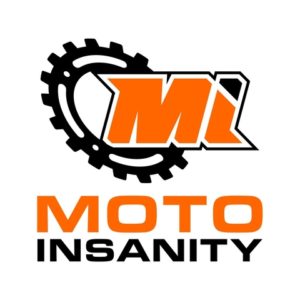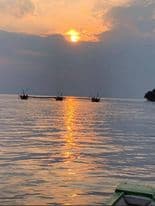
After taking a real adventure on my motorcycle recently, I’m already planning my next trip. It made me reflect on the effort it takes to go on a motorcycle tour along with what a rider needs.
On average, a motorcycle tour rider will need safety equipment such as a helmet, protective clothing, boots, and riding gloves. First aid equipment and a proper toolset will be necessary in the event of a breakdown or injury. Shelter needs to be considered such as a tent or hotel. Adequate riding skills are required.
As you can see there is a lot to consider for a motorcycle tour. To set yourself up for the best experience for your tour, start by reflecting on the intent of your trip.
Motorcycle Tour Intent
On my recent trip, we started the planning with a specific destination in mind, The Dragon’s Tail. I had never ridden it and my riding partner had only ridden it in the rain.
A few days before the trip, the chance of rain started creeping into the forecast. The odds of rain kept increasing and put our original plans in jeopardy. We decided to make a pivot regarding the trip.
Instead of trying to camp and ride the Dragon, we decided to delay our start time from a Friday afternoon to the following morning. We were going to see where “the wind blew us.”
For all of the planning I had completed, it was thrown out the window. The intent of our trip changed. As a planner by profession, this put me out of my comfort zone.
I was able to make the pivot and once my mind was in the right spot, it was one of the better rides in many years for me.
As a rider, you need to consider the intent of your trip to make it great.
Motorcycle Touring With A Specific Destination
In my opinion, these are the easiest trips in which to prepare. You know the destination, most likely the route, and what to take for clothes, lodging, etc.
The ride is more about a means to have fun in pursuit to a specific destination. The “real fun” was meant to be had at your final resting point.
Not a lot of variability exists in these kinds of trips.
Motorcycle Touring With The Intent To Ride
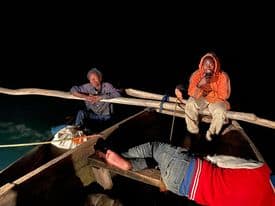
During the trip I described so far, it sounds like we just went. For the most part, we did.
If one of us wanted to head down this road or that road, we flipped on the signal and went. We even ended up turning back at one point to avoid a sketchy gravel road. It felt like we had turned into adventure riders at that point.
The only two key moments in the day occurred between 1-2 o’clock and around 6 o’clock. The first time is when we had to make the decision on whether we were going to camp that evening. If so, we had to find a camping spot.
If we were not going to camp, we could wait until 6:00 to think about finding lodging. This is what we ended up doing since it was cold out.
We were prepared to camp or stay in a hotel. As a result, I ended up taking more crap than we needed.
On these trips, it is fun to just go, but it usually comes at cost of carrying more gear than you may need to stay prepared for any condition.
Minimalist Motorcycle Camping vs Moto Glamping
You have limited room on a motorcycle, so taking the right amount of gear while not over doing it is hard.
When you are new to motorcycle camping, you’ll ended up taking more than you need. Don’t be surprised if you become frustrated at the time it takes to pack or unpack the bike.
As experience builds, knowing what to take and where it goes on the bike makes the whole thing worth while. You will still need to take time to determine if you want to have a more luxious exerperince or one of a minimalist mindset.
This brings us to asking the question do you go for motorcycle camping or Moto glamping?
What is motorcycle camping?
Motorcycle camping is the act of taking your motorcycle on an overnight or several day trip with it being the primary means of transportation. The motorcycle becomes multifunctional acting as the cornerstone moving you, starting conversations, providing entertainment value, and potentially part of your shelter. Minimal packing is the theme due to the finite space on a motorcycle.
As riders age, the appeal of sleeping on the ground or taking the time to set up camp become less desirable. For these motorcycle travelers, a hotel becomes the primary means of lodging.
At a factor of several times the cost of motorcycle camping per night, the money invested for motocamping quickly pays for itself.
Part of the reason for the quick payback is the minimalist approach with taking the bare necessities.
What is moto glamping?
Moto Glamping is the act of motorcycle camping, but with enhanced luxury. While it is not traditional clamping, often moto glampers pull a small trailer behind their motorcycle. This style of travel also has additional enhancements like coolers and nicer cooking equipment.
Motoglamping is somewhere between minimalist motorcycle camping and staying at a hotel. The work to set up camp is about the same as the minimalist approach, but does not see the quick payback as the trailer will cost a few thousand dollars.
What should I bring on a motorcycle tour?
While you may be going through a company to take your tour, you’ll experience most of the same basic needs. I spoke with Vincent Kagabo from motorbiking-rwanda. He gave be a great list to start building from
- Protective gloves
- Jacket with back elbow protection
- Motorcycle boots (preferable waterproof)
- Helmet
- Sunscreen
- Rain Gear
- Mosquito repellent
As you can see, this list is a great starting point and adequate for those traveling on a ride with Vincent. He mentioned that when riders are not able to provide the equipment on the list, he can jump in and provide a lending hand.
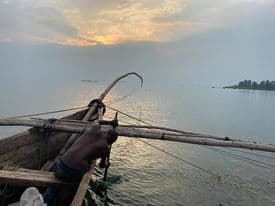
Breaking the list down a little more:
Protective Gloves– The kind of glove you take should reflect the kind of environment in which you will be riding. For example, you don’t want to take thick gloves for riding in hot or humid places.
Jacket– The same thing applies to your riding jacket. While Vincent did not mention it to me, I would imagine it would be harder for him to get a well-fitted jacket considering since we are all a little different in shape and size.
Boots– You need to carefully consider the kind of boots you take on your trip. Since you’ll be remote places, a stiffer boot will provide better protection in case of an accident or the bike falling on you, but it becomes less comfortable to walk around. Stiffer boots provide less flexibility.
Helmet– I would prefer to take my helmet versus borrowing one. You’ll know the complete history of your helmet and be comfortable.
Consider two points if you elect to borrow one from the touring company.
a. Head shapes tend to be different across the globe. In the US, we tend to have more of a round head while in Europe the head shape is more oval.
b. You don’t know how long the helmet has been in use. In part of this article, I discuss how long helmets should be used.
Sunscreen- My preference for sunscreen is too overdue it versus under. I go straight for the SPF 50.
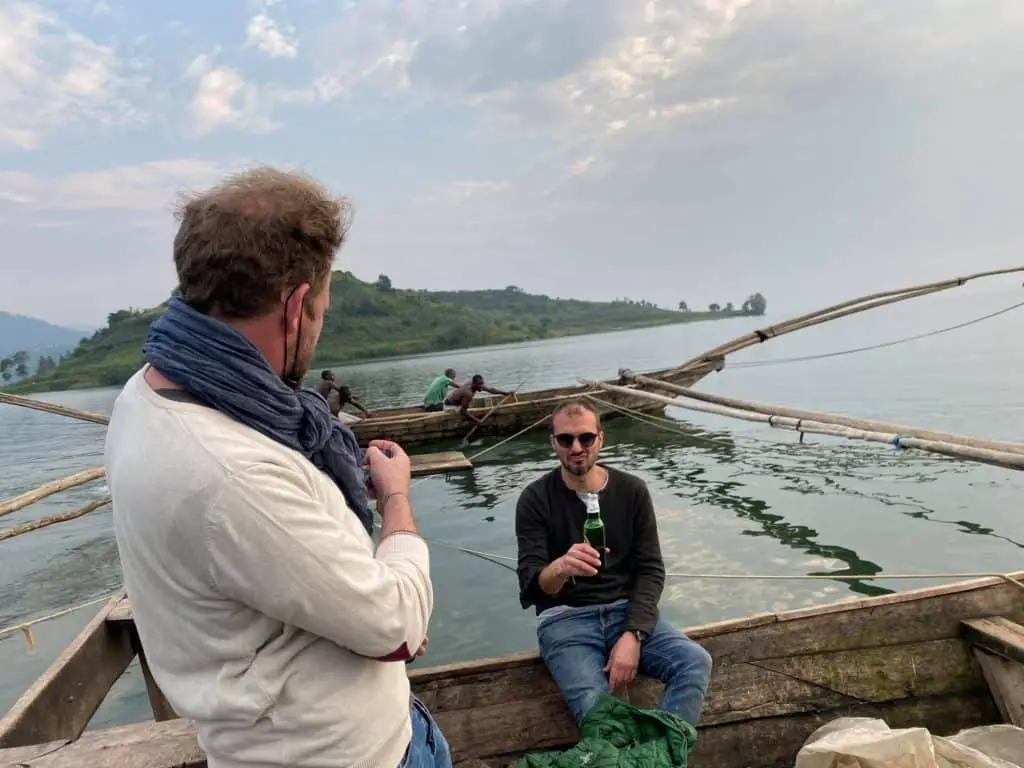
Rain Gear– Coming back to the environment you will be exploring should be the driver in whether you take rain gear. In the case of Vincent, he makes sure to put it on the list of items a rider should bring. If you plan on riding in a dry environment, I would probably leave it home.
How should I prepare for a motorcycle road trip?
Vincent and I also discussed how to prepare four a tour beyond the equipment a rider should bring. The table below provides a summary your your consideration.
| Factors To Consider | Importance |
| Country Your From | Bridging the cultural gaps can make your trip more enjoyable and relaxing |
| Age | Your age affects where and how long you might ride each day |
| Types of Experiences you want | Do you want to focus on the culture, the ride, or being in nature |
| Customization of Tour | Focus on spending your time where you will find the most value |
Country Your From– Where we come from plays a big role in who we become as people. I would argue most of us do not realize the impact our origins play in our lives.
Think about your morning routine or mid-afternoon activities. In the US, we tend to focus on being productive and making money while in other parts of the world a nap is the priority. At least that is what has come up in conversations and what I have read.
As an American, my initial thought is, “What’s wrong with these people?” They are wasting so much valuable time. Then an important realization hits me. We are all climbing the same mountain, but we start from different sides.
The point is to try and understand your cultural influences and those of the area you’ll be visiting. It will likely increase your appreciation for the area where you be riding your motorcycle.
Age– Let’s face it. We do not ride motorcycles the same way at the age of 45, 55, or 65 as we did when we were in our 20’s.
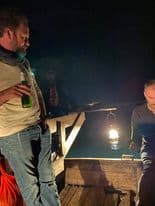
Young riders love speed and higher-risk styles of riding. Older riders tend to like the journey more and value focus on the overall experience.
Older riders might need to make more frequent stops than younger riders. Perhaps it is to rest, maybe just to smell the roses, or catch a view. Generally, younger riders tend to push past these things.
I cannot tell you the times I wished I made additional stops in my 20’s.
Types of Experiences– During my conversation with Vincent, he opened my eyes to experiences I would have never considered on a motorcycle tour.
Here are a few examples:
-Going for a canopy walk in Nyungwe Rain Forest National Park
-Safari Game Drive in Akagera National Park – see the African Big Five, Birds
-Locally made wooden boat trips in Lake Kivu to Islands for Monkey trek and bird watching
-Fishing experience with local fishermen who spend every night fishing SAMBAZA and TILAPIA in lake Kivu (3 Happy Hours with them sharing a beer while fishing)
Give some thought to the experiences you want to have and share that with your guide. Drinking beer with local fishermen… Almost sounds like what we do in the US.
Customization of Tour– After you have identified the experiences and activities you want, you now have to figure out how to get them.
Of course, you can plan the whole trip yourself. If you are a world traveler already, it probably makes sense for you to do this, but most of us are not. The additional help from a guide or tour company can prevent a lot of stress.
What better way to immerse yourself into the trip than from someone who lives in the region in which you’ll be traveling. Someone like Vincent. (No I am not paid nor is there any affiliate for his trips. I just really liked what he has to offer.)
A good tour guide will make changes to your trip and customize it to the types of experiences we already discussed.
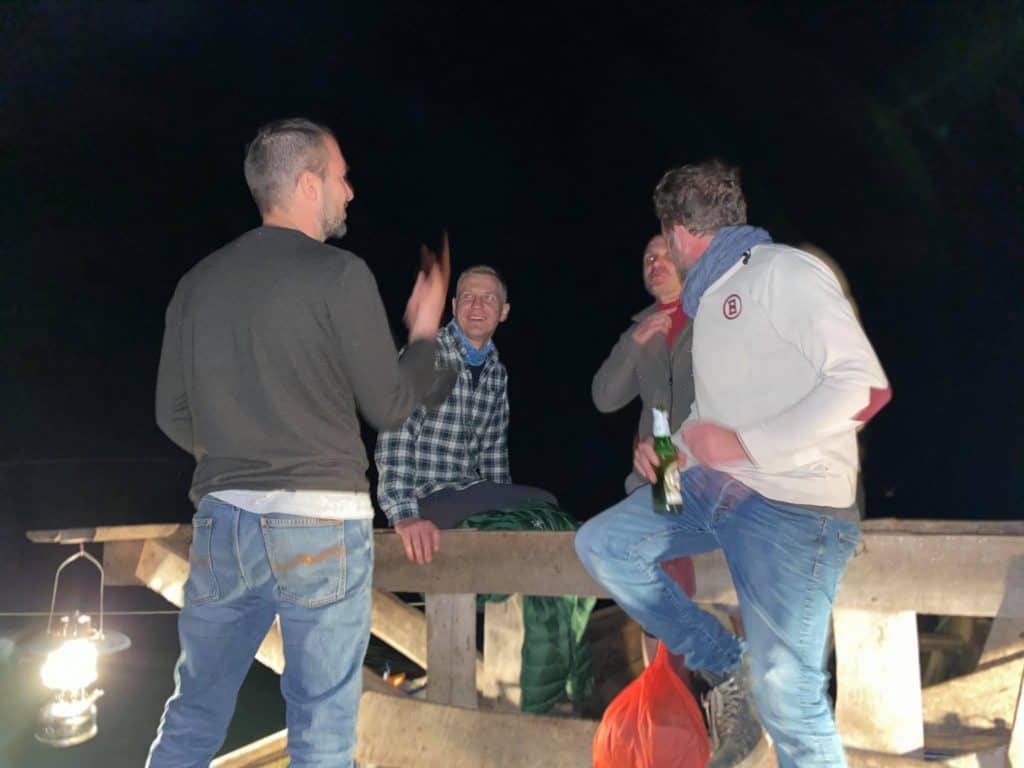
When putting a tour together, people like Vincent, take these factors into account and make adjustments to your itinerary to maximize the enjoyment factor.
Taking An International Motorcycle Tour
While planning and taking a tour does not have to be completed internationally, I would highly encourage it.
While I have traveled and participated in many activities across the US. Traveling outside of my borders is something I long to do. What better way to experience the world one via a form of transportation you love.
After listening to many hours of Adventure Rider Radio podcasts, I think anyone who loves motorcycles would enjoy some form of International motorcycle tour.
The question becomes how to approach such a large task for someone like myself who has not traveled internationally, let alone via motorcycle.
How would I handle transporting my bike across any ocean? How do you handle any border crossing? What if I don’t have the proper paperwork? What if my bike breaks down?
These are only a few of the questions running through my mind as the international dream starts developing.
The answer for the first few trips becomes solved by using a motorcycle touring company like Vincent’s.
As you have seen from the earlier parts of the post, they do help simplify things for the rider. The benefit becomes reduced stress from not dealing with the logistics to the questions like I just posted.
The rider can focus on enjoying the rich cultural experience and riding.
You still need to go through the process of determining your intent behind the ride, basic prep with your gear, and so on. You don’t have to take the extra time to figure out the stuff you don’t know yet.
Special Thanks
I would like to give a special thanks to Vincent Kagabo for his contributions this article. Vincent can be contacted via his LinkedIn profile which I have linked to name many times in this article or via his email. Motorbiking.Rwanda@gmail.com
Vincent also provided the photos for this post.
